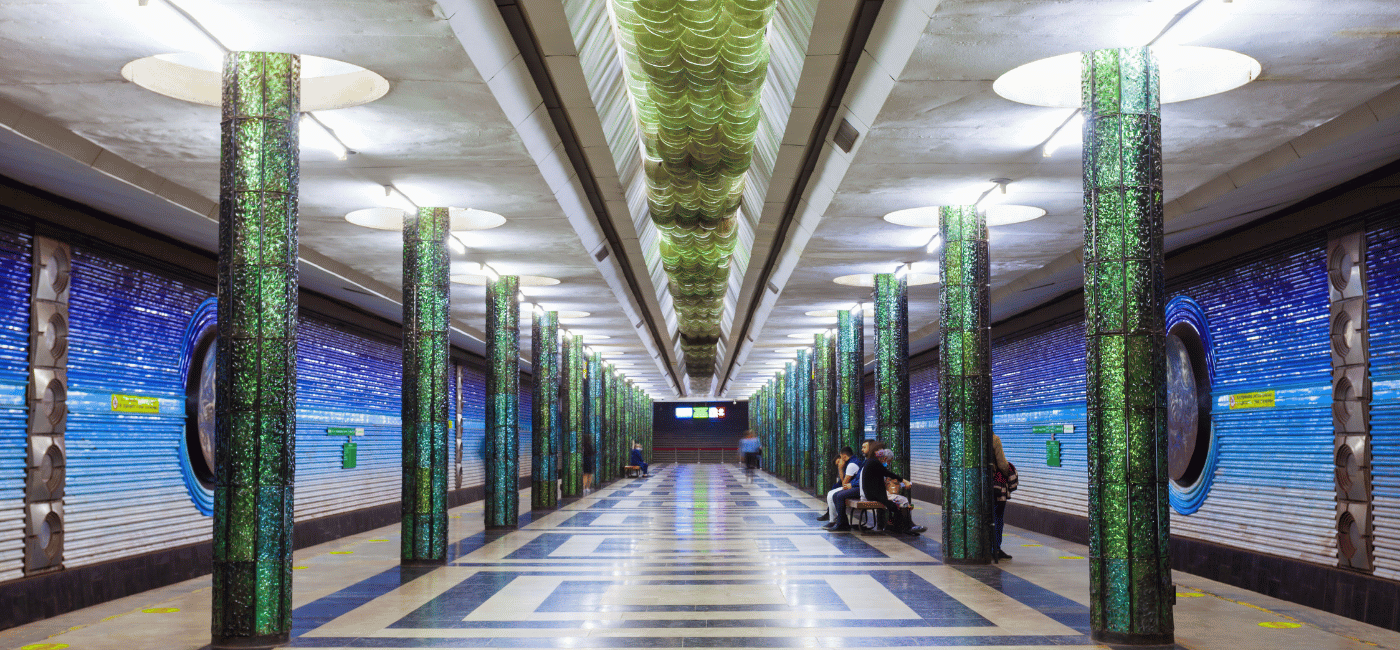Tashkent Metro

Metro in Tashkent
Tashkent Metro: The First Subway in Central Asia
The Tashkent Metro is one of the most beautiful and historically significant metro systems in the world. Opened in 1977, it was the first subway in Central Asia and remains a vital part of Tashkent’s transportation system, connecting key districts of the city.
Historical Background
Construction began in the early 1970s, following a major earthquake in 1966, which highlighted the need for an efficient transport system.
The metro was officially opened on November 6, 1977, during the Soviet era.
Originally, it served as both a transportation network and a bomb shelter, designed to withstand nuclear attacks and earthquakes.
Architectural Beauty
Tashkent Metro is famous for its ornate and artistic stations, each with a unique design inspired by Uzbek history, culture, and Soviet-era aesthetics.
The stations feature marble columns, intricate mosaics, decorative chandeliers, and colorful ceramic tilework.
It is often compared to Moscow and St. Petersburg metros due to its grand and elegant interiors.
Main Metro Lines & Notable Stations
The Tashkent Metro consists of four lines with over 40 stations:
1. Chilonzor Line (Red Line) - 1977
- Mustaqillik Maydoni – Near Independence Square, a symbol of Uzbekistan’s freedom.
- Pakhtakor - Inspired by the cotton industry, an important part of Uzbekistan’s economy.
2. Uzbekistan Line (Blue Line) - 1984
- Kosmonavtlar - A tribute to Soviet cosmonauts, decorated with space-themed art.
- Toshkent - A grand station with traditional Uzbek motifs.
3. Yunusobod Line (Green Line) - 2001
- Bodomzor - Modern design with elegant marble and lighting.
- Shahriston - Showcasing Uzbek architectural elements.
4. Circle Line (Yellow Line) - 2020
- The newest line, designed to improve city-wide connectivity.
Interesting Facts
- Photography was prohibited in the metro until 2018, as it was considered a strategic military object.
- The metro is one of the cleanest in the world, with no litter or graffiti.
- Trains run efficiently, with short waiting times and affordable fares.
Conclusion
The Tashkent Metro is more than just public transportation - it's a living museum of art and history. Whether you're commuting or exploring as a tourist, riding the metro is a must for anyone visiting Tashkent. It showcases the blend of Soviet engineering and Uzbek artistic heritage, making it one of the most unique subway systems in the world.
List of Top Sights to See in Tashkent

